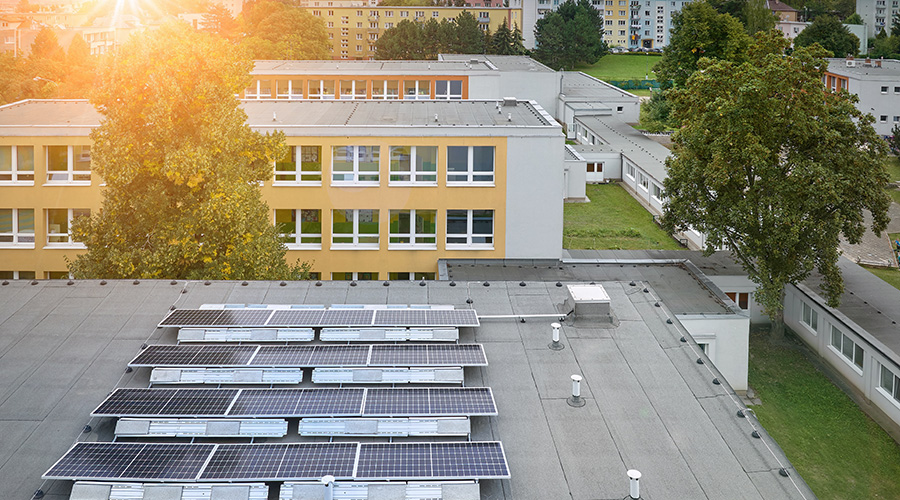Utility Master Plans Help Ensure Facility Reliability
In 24/7 higher education facilities, power and water distribution systems need to remain resilient
In the modern world, nothing can bring life to a screeching halt faster than a power outage. And yet, nothing gets taken more for granted than the ability to access energy and light at the flip of a switch.
In a higher-education environment, where important activities are taking place around the clock, it is critical that the power and water distribution systems throughout campus remain resilient and robust at all times. By far the most effective method for achieving that level of reliability is the creation of a Utility Master Plan, then partnering with a project team with the expertise to develop a program for implementing its many objectives and components.
The value of being proactive
Campus administrators are under constant pressure to keep budgets in line, if not being tasked to make deep cuts. One area where expenditures can often be greatly minimized is in the maintenance and upgrade of campus mechanical systems. By taking a proactive approach to managing these vital systems, long-term operational and replacement costs can be reduced significantly.
Unfortunately, top level decision-makers are often unaware and not engaged in this aspect of facility management, where too often a reactive approach prevails.
Paying to replace a broken-down boiler or transformer comes with an added cost in terms of disruption to campus activities while the affected areas are out of service. An additional driver is also deferred maintenance with no defined standards. These situations can be avoided by implementing a program – which can offer recommendations for multi-phase rollout – that uses industry and manufacturer data to accurately project replacement schedules. Perhaps even more importantly, this data can be used to establish more effective maintenance schedules, cost analysis and repair protocols that will maximize the service life of every component that makes up the utility system.
Leveraging specialized expertise
While awareness is certainly an issue, the real value comes when intentions are made actionable. A project team with experience working on university campuses can develop a comprehensive utility improvement program that will begin implementing the maintenance and upgrade tasks identified in the master plan.
On the administrative end of things, the program can help manage the many equipment warranties that manufacturers provide. Ensuring that required maintenance tasks are performed correctly and at the prescribed time periods is critical so that the warranty is not voided in the event of an equipment failure.
Some schools will rely upon the data within a utility master plan to support bidding documents on capital improvement requisitions. By evaluating current conditions and equipment in relation to projected changes in need, along with advancements in technology, the university stakeholders can be more specific in their request and receive more competitive and targeted bids.
With the increased emphasis being placed on safety and sustainability, the regulatory environment has become increasingly stringent, requiring a level of familiarity that is rarely found in an in-house engineering or facility department. Code adherence is a critical area where a utility plan is absolutely essential to avoid violations, but also invaluable in achieving the goals that the regulations were designed to maintain.
Increased efficiency in energy systems is being driven by advancements in technology that seem to change by the day. A utility program can introduce the latest tools that will allow a university to fully leverage this technology without a large investment. Solutions involving 3D modeling, video and spatial inspection, and data collection/analysis are leading to incredible improvements in efficiency, while lowering maintenance and capital costs. The emergence of artificial intelligence across almost all technology platforms is expected to accelerate these advancements to an almost unimaginable degree in the years and decades to come.
A plan for practical improvements
Because of the advanced age of the average college or university, the utility systems that serve its facilities are often a patchwork of structures, equipment, technologies, and applications. A utility plan tailored to higher education market drivers will factor it all in terms of the problems and situations that can develop as this infrastructure ages and eventually falls out of practical use. Such a plan can incorporate a versatile toolbox of lessons learned, best practices and fresh perspectives that can be deployed in producing optimal solutions.
Developing and managing capital improvement programs is perhaps the area where a utility improvement program can provide the most value. Due to budget limitations, many universities take a bandage approach to keeping systems up and running. Even in situations when entirely new systems would be the most cost-effective over the long term, if the money is simply not available, utility experts and project teams can help find other ways to approach improvements and repairs that will optimize the level of investment available.
One proven strategy is to break down large projects into manageable pieces that can be programmed over years to be less impactful to the annual budget. Projects can be prioritized and also piggy-backed to minimize both disruptions and construction/installation costs. It is important that improvements included in a utility master plan are developed in consideration of the organization’s overall strategic plan. If the school is planning for either growth or a streamlining of educational offerings, then the future utility needs must be calculated to right-size the design based on recommendations from the utility’s engineer.
Related Topics:













